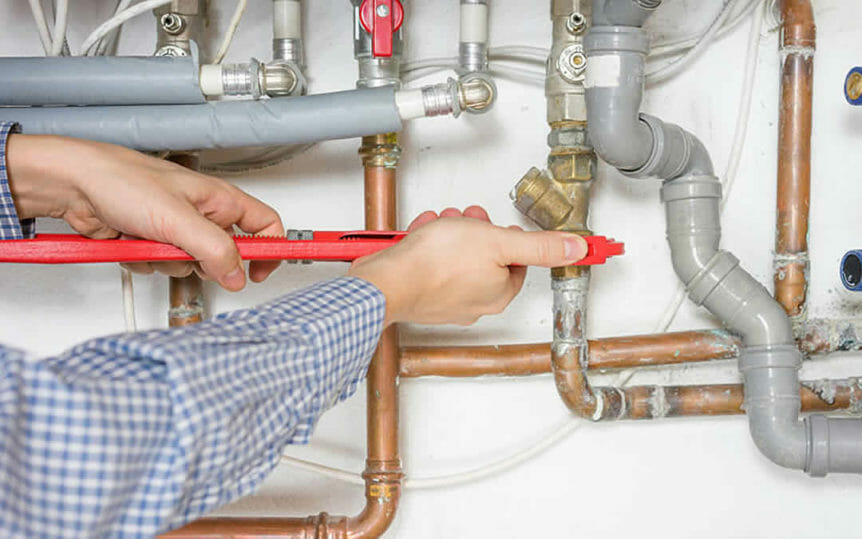
Be Prepared — Learn How Plumbing Systems Work In Your Home
Plumbing systems have been around since the ancient Greek, Roman and Persian empires. Even way back then people understood the importance of clean water coming in and contaminated water going out. While today’s plumbing techniques have been improved quite a bit, they are still based on those same ancient principles. But do you understand how your plumbing system really works?
Sure, we all know that by turning on a faucet water is going to come out, or that when we flush the toilet clean water will fill the tank while the dirty water will be swept away. But how does this happen? Read on to get the scoop on how plumbing systems work in the typical household so you can make sure yours is installed correctly and be prepared next time a problem comes your way.
Unless your home receives its water from a well, water enters your house through the main water supply line that is connected to the city’s municipal water supply. The average family of four uses around 400 gallons of water a day, and the amount used is measured by a water meter before it enters your home. As soon as water enters your home, it is sent directly to the cold water supply system. All houses have four separate piping systems:
Cold Water System: Provides water to all fixtures in the home that require cold water only, such as your outside faucets and toilets. A part of this line splits off and runs directly to the hot water heater.
Hot Water System: From the water heater, the hot water line runs off and provides hot water to bathtubs, washing machines, dishwashers, showers and sinks. It runs parallel to the cold water supply line.
Drain System: This system can arguably be the most important system in the home because it removes all waste and unused water from your house. The drain system works by gravity, which forces the water to flow downhill through pipes that are connected to other vented pipes. The role of the vented pipes is to bring fresh air inside which allows the water to flow freely. All wastewater flows to the sewer line that is connected to each home. For houses that are not connected to a sewer line, the waste will flow into a septic tank.
Gas System: This system brings gas into your home directly to all gas powered appliances and systems, such as stoves, tankless water heaters and fireplaces.
“There is really not whole lot to it, aside from there being all different types and sizes of pipes and a bunch of ways to put them together,” said John Moore Services Senior Operations Manager Joe Bany. “There are calculations that a plumber has to do to make sure that the pipes are the right size for the house. An improperly sized house can create a lot of problems.”
Each system is uniquely designed for a house and is based on use. A smaller house will not have as many bathrooms and faucets so it will probably only need pipes that are ¾ inch. But a larger house will need larger 2-inch water line pipes to be able to carry the amount of water that the house needs. An improperly sized system will result in the following problems:
- If the water line is too small for the house, then the correct amount of water needed for a faucet will not reach it in time, which will cause low pressure in all your faucets, showers, and toilets.
- If the drain line is too small, then all the waste and unused water will take longer to leave your house and will cause all your drains to back up.
- An improperly sized gas line will keep the right amount of gas from reaching all gas-powered appliances, like a tankless water heater or fireplace. The appliances will work one at a time, but in the peak of winter when you want to use them all simultaneously, you will have shortages.
“Everything has to be sized. Every house is different with different equipment, different amounts of bathrooms and faucets, and it’s important to make sure your plumbing system is sized appropriately for your house,” said Bany. “You may really want to have your home checked for sizing if your house is 20-30 years old. Older homes are notorious for putting in ½ inch water lines everywhere no matter the size of the home. Years ago there wasn’t a lot of inspections done on plumbing work like there are today, so having your system checked out is a good idea.”
Without a properly installed plumbing system, your home wouldn’t be the same. Our expert plumbers at John Moore Services can solve any plumbing problem, and can also inspect your current system to make sure it is sized properly for your home. Give us a call today!
